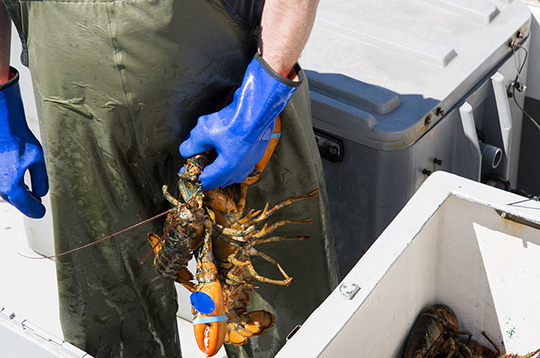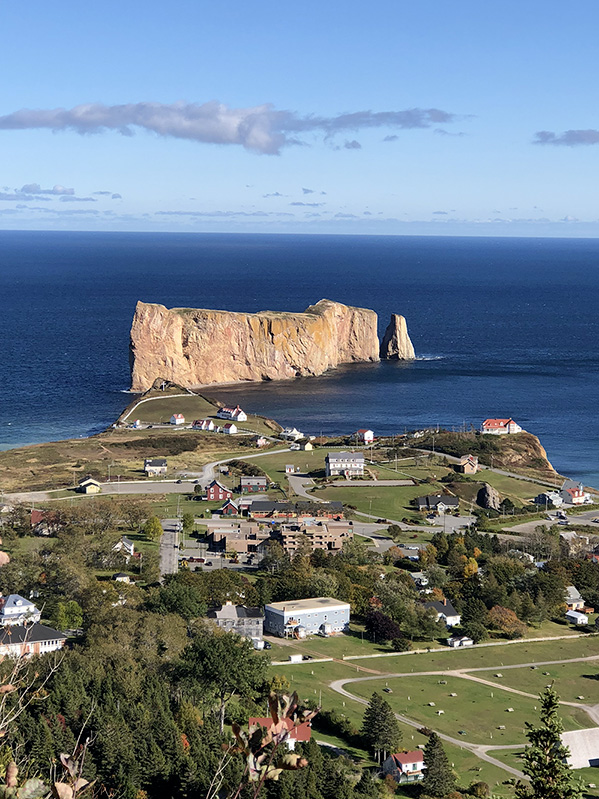
Gaspésie–Îles-de-la-Madeleine: Resilience nestled between sea and mountains
A wind of economic change is blowing over the region
From: DEC - June 1, 2022
Diversification for renewal
It was within this context that, in October 2000, the Government of Canada opened a Canada Economic Development for Quebec Regions (CED) business office in the Gaspésie region. From Gaspé to Cap-Chat and from Avignon to the Magdalen Islands, the challenge for the new team was as vast as the area it would be serving.

CED became a key player in the economic development of the Gaspésie region. Its business office quickly forged ties with local stakeholders. A real synergy was created that enabled the leveraging of the unique character of the region so that the foundations of the economy could be rebuilt and activities diversified.
With an experienced team of nine employees who work with local stakeholders on a daily basis to support entrepreneurs in their projects, CED can now safely say that its contribution to the economic recovery of the Gaspésie region has paid off.
Beyond the famous “tour of the Gaspé Peninsula”
The Gaspé and the Magdalen Islands are known for the beauty of their landscapes—and the region’s tourism operators and cultural providers capitalize on these natural attractions. With the support of CED, many projects have helped boost tourism in the Gaspésie region through the development of interactive and innovative attractions. Take projects such as Nova Lumina in Pabos Mills, the Bioparc in Bonaventure, Exploramer in Sainte-Anne-des-Monts or L’Anse-aux-Baleiniers on the Magdalen Islands, for example. Over time, these attractions contribute to the development of a very flourishing tourism industry that never seems to stop growing.

- Courtesy of Pit Caribou
A similar trend has also been observed in gourmet tourism, which is becoming increasingly popular. The Route des bières de l’Est-du-Québec [Eastern Quebec “beer route”] project is an example of success resulting from joint efforts. Microbreweries such as Malbord, Cap Gaspé, Pit Caribou, Auval, Brett & Sauvage, and Le Naufrageur in the Gaspé, as well as À l’abri de la Tempête on the Magdalen Islands, are now experiencing incredible popularity because of their innovative products infused with regional DNA. And CED made sure it was there to support the startup or growth of these exceptional businesses.
The “white” gold rush
Winter in the Gaspé: 3,000 km of snowmobile trails, 500 km of cross-country and snowshoeing trails, and the BEST trails in Quebec for back-country skiing.
Guillaume Molaison, owner of Chic-Chac, a business that specializes in adventure tourism, has exploited the full potential of winter in the Gaspé. Driven by ambition and the support of partners such as CED, Chic-Chac is now as successful as strong winds can be in Murdochville . . . which is why there are wind farms there.
“The Gaspé receives astronomical quantities of snow and powder. This is a real asset for the region. Our funding for the Chic-Chac project is exactly what CED wants to achieve in terms of supporting economic development in the region. And the project has also given Murdochville a new lease on life.”
- Marie-Claude Bourque, Regional Director of the Gaspésie–Îles-de-la-Madeleine Business Office
Wind in its . . . blades

- Courtesy of Matthew Hunt
The wind corridors that the Gaspé is known for resulted in the first wind farm in Quebec being set up in Cap-Chat in 1998. Two years later, the TechnoCentre éolien (now known as Nergica) came into being. Recognizing the potential of wind power, the Gaspésie‒Îles-de-la-Madeleine Business Office was one of the first players to get involved in the creation of a college centre for technology transfer (CCTT) that would become a benchmark for renewable energy in Quebec.
The arrival of this new player would be a determining factor in the region. Nergica is helping to develop the supply chain for major clients, such as LM Wind Power, and to maximize the benefits for the region. Its role as an enabler has not only allowed the wind power sector to develop, but has also put the Gaspé on the map. The region now has the wind in its . . . blades!
The Magdalen Islands: CED is more involved than ever
Despite the lack of a physical office on the archipelago, CED still has a strong presence on the Magdalen Islands. Working closely with local players, such as the CFDC, the tourism association and other development organizations, CED is always on the lookout for ways to assist Islanders with their development projects and help them stay the course in their anchor sectors.
COVID-19 has had a significant impact on the Magdalen Islands’ fishing industry. Through initiatives such as the Canada Seafood Stabilization Fund, CED has been able to help businesses such as the Coopérative des Pêcheurs de Cap Dauphin and Homard des Îles increase their storage capacity. With their new acquisitions, these businesses can now extend their processing periods in the event of market instability.
A wind of change

- Courtesy of Matthew Hunt
Today, the Gaspésie–Îles-de-la-Madeleine Business Office team is actively pursuing the work that began more than 20 years ago. The team is already addressing issues such as the labour shortage and population aging. “It is encouraging to see that the efforts of the past are now bearing fruit,” notes Marie-Claude Bourque. “The region is experiencing positive regional migration growth. Social media is shining a new and positive light on the region. It’s now cool to live in the Gaspé or on the Magdalen Islands, where you can enjoy a happy hour by the sea while starting up a business project. There’s been a change in mentality—both towards the region and within the region itself. Entrepreneurs now want to be open year-round. A real wind of change is blowing over the region.”